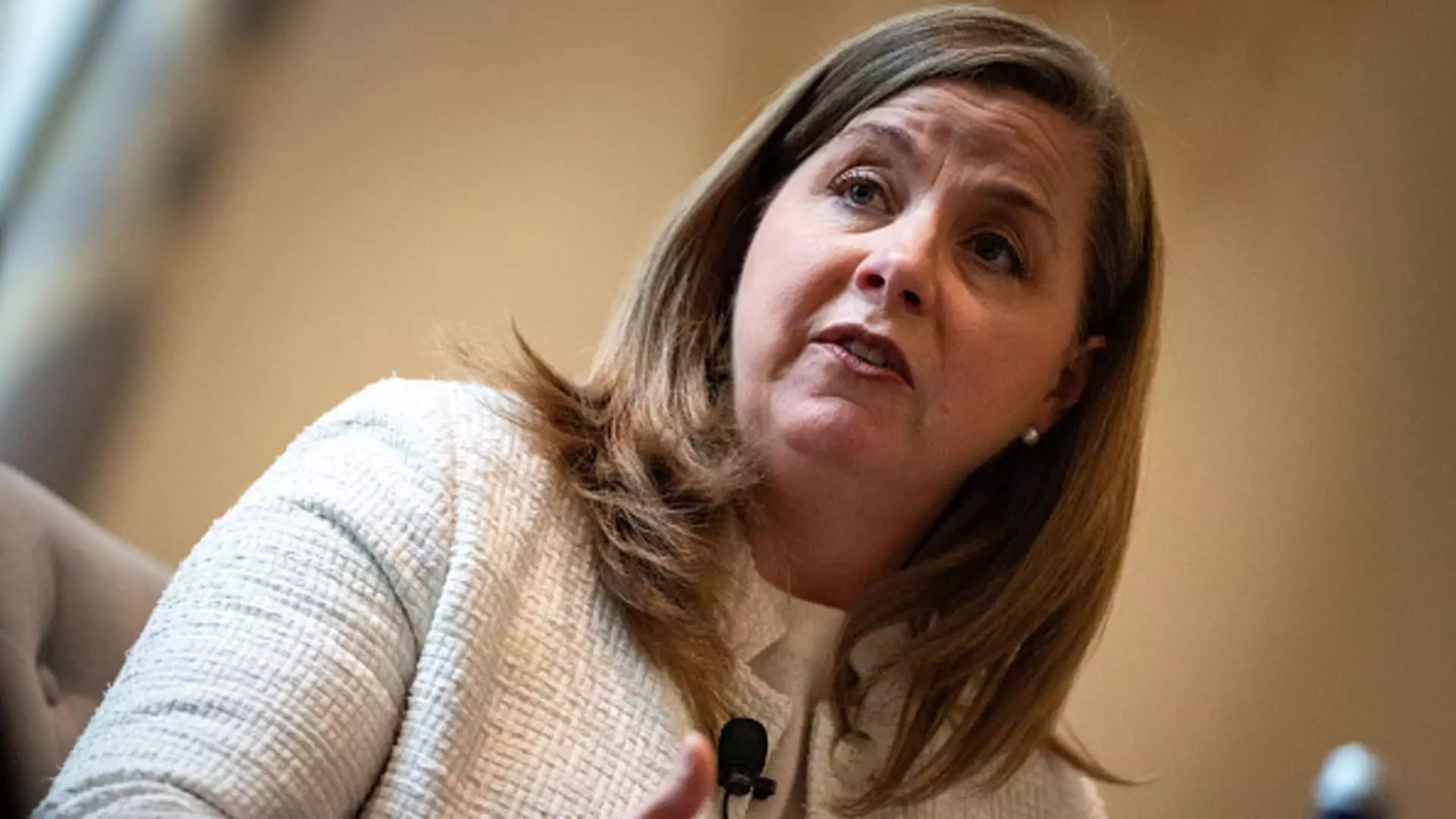In the realm of monetary policy, Federal Reserve officials find themselves navigating a complex landscape shaped by conflicting economic indicators. Recently, Federal Reserve Governor Michelle Bowman indicated her support for the interest rate reductions enacted towards the end of 2023 but emphasized that no further cuts are necessary for the immediate future. Addressing an audience of banking professionals in California, her remarks were a blend of insights into both monetary policy and regulatory oversight, reflecting the multifaceted responsibilities of the Federal Reserve.
Bowman’s cautious stance springs from her observations regarding inflation, which remains “uncomfortably above” the Fed’s target of 2%. She believes that the latest quarter-percentage-point reduction in December should mark the end of the current cycle of cuts. This perspective is significant, as it highlights her view that the policy has reached a point of “neutral” — where it neither boosts nor hampers economic growth. This implies a desire to avoid overstimulating the economy, especially in the face of ongoing inflationary pressures.
The nuances of inflation dynamics have emerged as critical for policymakers. While the Fed’s preferred inflation metric of 2.4% as of November appears relatively close to the target, the underlying measures show a more concerning narrative. Excluding food and energy, the core inflation rate stands at 2.8%, reinforcing Bowman’s assertion that the Fed faces “upside risks” to inflation. The contrast between headline and core inflation data illustrates the complexity of current economic conditions and suggests that broader economic improvement may have stalled.
Bowman noted that while there was considerable progress in moderating inflation in 2023, challenges persist. The FOMC’s minutes from the December meeting revealed a consensus among other members regarding inflation concerns, though many felt optimistic that inflation would gradually align with the 2% goal, projecting it may take until 2027 for such alignment to occur. This disparity in expectations among committee members complicates the Fed’s ability to convey a unified stance to the markets and the public.
Interestingly, Bowman’s outlook contrasts sharply with that of her colleagues. For example, Governor Christopher Waller expressed a more optimistic view during a recent speech in Paris, arguing that economic indicators hint at moderation in inflation. With a range for the Fed’s key borrowing rate sitting between 4.25% and 4.5%, Waller anticipates further reductions may be warranted. Additionally, regional Federal Reserve Presidents such as Susan Collins and Patrick Harker have voiced confidence in the possibility of rate cuts this year, albeit at a slower pace than previously assumed.
These differing perspectives within the FOMC highlight the ongoing debate about the right balance of monetary policy — an issue that Governor Bowman continues to navigate carefully. Although she is known for her hawkish position, which often advocates for more robust measures against inflation, her comments reflect a desire for a measured, cautious approach in light of current economic indicators.
The dynamic nature of the economic environment presents a backdrop for future decisions by the FOMC. As a permanent voting member, Bowman’s opinions will be influential in shaping monetary policy directions moving forward. Her cautious advocacy against loosening policy too drastically ties closely with the sight of strong stock market performances and rising Treasury yields, which she interprets as signs that the current interest rates are playing a restrictive role in economic activity.
Moreover, Bowman’s acknowledgment of broader economic factors — including the incoming administration’s policies and their potential effects on the economy — adds a layer of complexity to the Fed’s policy-making process. As discussions around tariffs and immigration intensify, the implications for inflation remain uncertain, prompting Bowman to advise her colleagues against premature conclusions regarding the new administration’s economic agenda.
As the Federal Reserve continues its delicate balancing act between fostering economic growth and controlling inflation, the diversity of opinions among its members underlines the complexity of its mandate. With Governor Bowman advocating for a cautious approach amid existing economic indicators, the Fed must navigate the uncertain waters of inflation and growth with diligence and foresight. As the year progresses, markets will be closely watching for signals from the Fed regarding its next steps, which will undoubtedly shape the economic landscape for many months to come.

